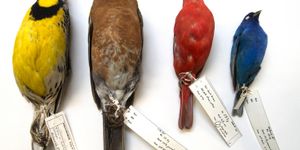The DNA Content of a Cell Helps Control Its Size
Cells have to maintain the right size; bacterial and eukaryotic cells tend to reach a characteristic dimension, but that may also be influenced by many things like nutrient availability. Cells are also known to divide once they reach a certain size. Researchers have long wondered how cells 'know' how big they are. In a new study in Science, investigators have now suggested that the DNA content of a cell acts like a kind of internal gauge that cells use to sense and alter their size.
"It has been suggested for a long time that DNA could be used as a scale for cell size, but it was unclear how cells could read the scale and use the information. The key is to use the DNA as a template to accumulate the right amount of a protein, which then needs to be diluted before the cell divides. It's exciting to come across such a simple solution to a long-standing problem," said corresponding study author Professor Robert Sablowski, a group leader at the John Innes Centre.
So how do cells sense their own size? In this study, the researchers used plant cells to help find an answer to that question. Meristem cells are part of the tip of a plant where growth is constant and cells divide continuously. During that cell division, however, meristem cells of varying sizes are generated; they are not uniform, but they do stay in a range of sizes over time.
The researchers found that while meristem cells can begin their lives regardless of their size, most of that variation is cut down by the time the cells are ready to divide. A protein called KRP4 acts to delay DNA replication, and the researchers followed this protein. They found that when cells start out, they all have the same amount of KRP4; small cells have highly concentrated KRP4 levels while they're more dilute in larger cells. The high concentration of KRP4 delays cell division when cells start out very small, and they have time to get bigger before dividing. Larger cells with dilute KRP4 can divide more rapidly without needing to grow. Thus, the size of meristem cells stays within a narrow range.
The scientists also found that in dividing cells, KRP4 links up with DNA, which ensures new cells all receive the same level. A protein called FBL17 removes KRP4 that's not bound to DNA from cells before they divide.
"One riddle we had to solve is how a cell can know how much it has grown when most of the components of a cell increase together in number and size so they cannot be used as a fixed ruler to measure size. One exception is DNA which exists in the cell in a discrete amount: its amount precisely doubles before cell division, but it does not vary with cell growth," explained Sablowski.
The researchers want to learn more about exactly how KRP4 binds and unbinds chromes, and whether that mechanism is the same or different in cells with different sizes.
This work may provide insight into the biology of crop plants, which often carry multiple copies of their wild ancestors' genomes.
Sources: Phys.org via John Innes Center, Science








